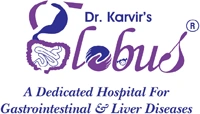Barrett's Esophagus Treatment in Mumbai
Barrett’s esophagus is a condition in which the cells in the tissue lining of the esophagus change and start resembling the cells of the intestine. Studies show that having acid reflux is the primary cause of barrett’s disease. Get the best options for Barrett's Esophagus Treatment in Mumbai with Our expert doctors.
What are the signs associated with barretts’sesophagus?
Although barrett’s disease does not have any symptoms, it is a warning sign of the potential risk of esophageal cancer. Therefore as a precautionary measure, you can watch out for the signs of the conditions it is associated with, such as heartburn, gerd and regurgitation.
How is barrett’s esophagus diagnosed?
Barrett’s esophagus by performing upper endoscopy. Your doctor will examine the appearance of the esophagus during endoscopy and further confirm it with a sample of tissue (biopsy). The doctor ascertains the signs of dysplasia or precancerous changes and its extent.
What is the course of treatment of barrett’s disease?
Depending on the degree of dysplasia, further course of action and treatment is decided.
- Low grade dysplasia – low grade dysplasia means that you have few abnormal cells but the majority of cells are not affected. The doctor prescribes regular monitoring and an upper endoscopy every six months to a year. They may also recommend ablation therapy in few cases.
- High-grade dysplasia – high-grade dysplasia requires removal of affected cells with the help of surgery, cryotherapy or photodynamic therapy.
- No dysplasia – the physician may recommend changes in your gerd treatment and regular screening along with dietary changes.
To know more about Barrett's Esophagus Treatment in Mumbai book an appointment with Globus Hospital call on 98331 06104, 98331 87118 or visit our hospital at 201, Second Floor, Kothari Milestone Mall, Near Natraj Market, S.V Road, Malad West - 400064. For hospital directions click here.
Others Condition:
Bloating | Cancers of Stomach, Intestine & Liver | Constipation | Hirshsprung’s Disease | Gallstone | Dysphagia | Inflammatory Bowel Disease | Pancreatitis | SIBO | Barrett’s Esophagus | Blood in Stools / Vomitus | Celiac Disease | Diarrhea | Fatty Liver | Gerd | Irritable Bowel Syndrome | Piles


